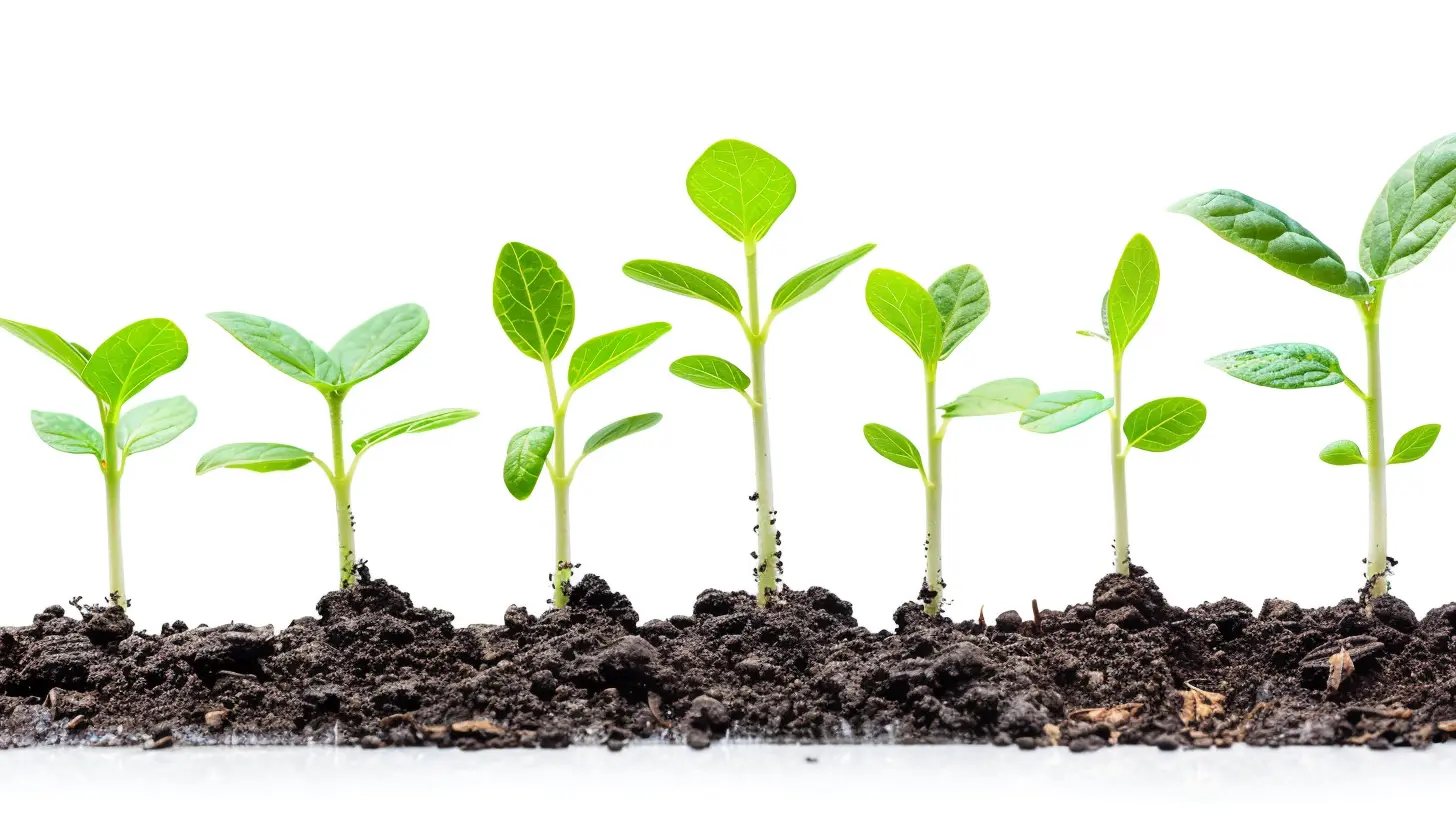How to Align Your Sustainability Goals with Business Growth
20 May 2025
Let’s face it; sustainability isn’t just a buzzword anymore. It’s the foundation of successful modern businesses. But here’s the million-dollar question: Can sustainability coexist with business growth? Spoiler alert—yes, it can, and it should. In fact, when done right, aligning your sustainability goals with business growth can be the perfect win-win scenario. Think of it like peanut butter and jelly—great on their own but absolutely unbeatable together.
But how do you pull this off? How do you strike that balance between being eco-conscious and driving revenue? Don’t worry, I’ve got you covered. In this article, we’ll unpack actionable steps, sprinkle in some real-world examples, and help you craft a strategy that benefits both your bottom line and the planet. Ready? Let’s dive in.
Why Sustainability and Business Growth Go Hand-in-Hand
First, let’s address a common misconception: sustainability and profit margins aren’t enemies. In fact, sustainability can be a growth driver when approached strategically. Imagine building a business model that reduces environmental impact while creating value for your customers. Feels like a superpower, right? Well, it kind of is.Consumers today are hyper-aware of the impact businesses have on the environment. They’re choosing brands that walk the talk when it comes to sustainability. According to Nielsen, 73% of global consumers say they’d change their buying habits to reduce their environmental footprint. If your business aligns with those values, you’re not just helping the planet—you’re appealing to an ever-growing market.
And it’s not just about consumers. Investors are also becoming more inclined to back companies with strong Environmental, Social, and Governance (ESG) metrics. Why? Because sustainable businesses are usually well-managed, future-focused, and more resilient to market disruptions. 
Step 1: Define Clear Sustainability Goals
You can’t hit a target if you don’t know what you’re aiming for, right? So, step one is to define what sustainability means for your business. This isn’t about slapping vague terms like “eco-friendly” or “green” on your website. It’s about setting specific, measurable, and achievable goals.Ask yourself:
- Do I want to reduce carbon emissions by X% in the next five years?
- Should I focus on eliminating single-use plastics in my supply chain?
- Can I improve energy efficiency in my production processes?
Whatever your goals are, make them SMART—Specific, Measurable, Achievable, Relevant, and Time-bound. And don’t forget to consider your industry and company size. A multinational corporation’s sustainability goals will look very different from those of a small local business. 
Step 2: Integrate Sustainability Into Your Core Strategy
Here’s the thing: sustainability isn’t a side hustle. It’s not something you bolt onto your existing business model and hope for the best. To make a real impact, sustainability needs to be woven into the very fabric of your operations.Start by assessing your current practices. Where are the inefficiencies? Are there areas where you can reduce waste, cut energy usage, or opt for more sustainable materials?
Next, align these initiatives with your overall business objectives. For example, if your goal is to cut costs, you might invest in energy-efficient machinery. If you’re aiming for market differentiation, you could create a sustainable product line. The key is to find that sweet spot where green practices overlap with business benefits. 
Step 3: Partner with Like-Minded Organizations
You don’t have to go it alone. Collaborating with other businesses, nonprofits, or even government agencies can amplify your efforts. Think of it as pooling resources to tackle a common challenge.For instance, supply chain partnerships can make a massive difference. If your suppliers share your sustainability goals, it’s easier to make meaningful changes at scale. Or, you could join industry coalitions that focus on sustainability standards. These groups not only offer valuable insights but also help you stay ahead of the curve in a rapidly changing regulatory landscape.
Step 4: Leverage Technology
Technology is your best friend when it comes to merging sustainability with growth. Innovations in energy management, waste reduction, and even AI can help your business operate more efficiently.Take, for example, smart sensors that monitor energy use across your facilities. These sensors can identify inefficiencies, enabling you to cut costs while reducing your carbon footprint. Or consider software tools that optimize your supply chain, ensuring you’re minimizing waste and maximizing efficiency.
And let’s not forget about data. Technology can help you measure and track your sustainability metrics, giving you a clear picture of your progress. This isn’t just good for internal reporting—it’s also something you can share with stakeholders to build trust and credibility.
Step 5: Involve Your Team
Sustainability isn’t a one-person job—it’s a team sport. For your initiatives to succeed, everyone in your organization needs to be on board.Start by educating your employees about the “why” behind your sustainability goals. Make sure they understand how these efforts align with the company’s mission and values. Then, encourage them to contribute ideas. Who knows? Your warehouse manager might have a brilliant idea for reducing waste that you hadn’t considered.
Also, recognize and reward employees who go above and beyond to support your sustainability efforts. It’s a great way to build momentum and show that you’re serious about making a difference.
Step 6: Communicate Transparently
Let’s talk about communication. If you’re doing the hard work to align sustainability with business growth, don’t keep it a secret. Transparency is key, not just for accountability but also for building trust with your audience.Share your goals, progress, and challenges openly. Whether it’s through your website, social media, or annual reports, make sure stakeholders know what you’re up to. But here’s the catch—don’t greenwash. Overstating your efforts or making false claims can backfire big time. Keep it honest, even if you’re still a work in progress.
Step 7: Measure and Adapt
Finally, remember that sustainability is a journey, not a destination. You’ll need to continually measure your progress and tweak your strategy along the way.Use key performance indicators (KPIs) to track your efforts. For example, if you’ve committed to reducing waste, measure how much waste you’re generating now versus when you started. And don’t be afraid to pivot if something isn’t working. Flexibility is crucial in striking the perfect balance between sustainability and growth.
Real-World Examples
Need some inspiration? Let’s look at a couple of companies that have nailed the balance between sustainability and growth.Patagonia
Patagonia has built its entire brand around sustainability. From using recycled materials to encouraging consumers to repair rather than replace their gear, the company has shown that eco-conscious practices can drive customer loyalty and revenue.IKEA
IKEA is another great example. The company has invested heavily in renewable energy and aims to become climate-positive by 2030. At the same time, its affordable, sustainable product lines make it a go-to option for consumers.Final Thoughts
Aligning your sustainability goals with business growth isn’t just possible—it’s essential in today’s world. By taking deliberate steps, integrating green practices into your strategy, and staying transparent, you can create a business that thrives while doing good.Remember, this isn’t just about saving the planet (though that’s pretty important); it’s also about future-proofing your business. Think of it as planting the seeds for long-term success. So, what are you waiting for? Let’s make sustainability your secret weapon for growth.
all images in this post were generated using AI tools
Category:
SustainabilityAuthor:

Rosa Gilbert
Discussion
rate this article
3 comments
Matilda McIntosh
Balancing sustainability with growth is a noble journey. Embracing eco-friendly practices not only benefits the planet but also fosters innovation and strengthens brand loyalty. Let's support each other in this vital mission!
May 23, 2025 at 3:09 AM

Rosa Gilbert
Absolutely! Balancing sustainability with growth not only protects our planet but also drives innovation and builds strong customer relationships. Let's work together towards a greener future!
Ford McKnight
Sustainability drives innovation; align goals for lasting success.
May 21, 2025 at 10:35 AM

Rosa Gilbert
Absolutely! Aligning sustainability with business objectives not only fosters innovation but also ensures long-term success. Thank you for your insight!
Harvey Franklin
Sustainability isn’t just a trendy buzzword—it's your ticket to thriving in the modern market! If your growth strategy doesn’t include eco-friendly practices, you’re living in the past. Embrace green goals now, or watch the competition zoom past you. No pressure!
May 21, 2025 at 3:47 AM

Rosa Gilbert
Absolutely! Integrating sustainability into your growth strategy is essential for staying competitive and relevant in today’s market. Let's prioritize eco-friendly practices for a brighter future.



